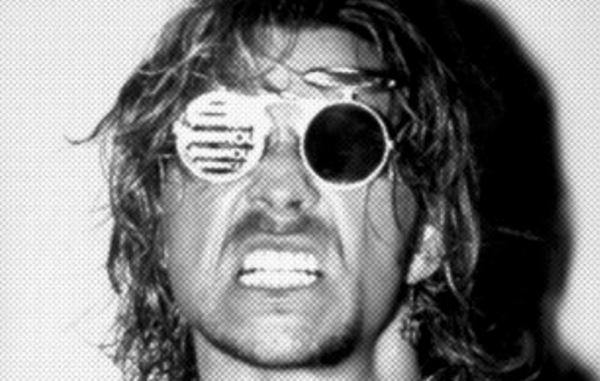
SPOTLIGHTED PODCAST ALERT (YOUR ARTICLE BEGINS A FEW INCHES DOWN)...
Art is the creation of something from nothing that elicits a reaction. Pro wrestling embodies that definition. In wrestling, men and women step inside the squared circle and create with their actions, expressions, words, and bodies to garner a specific and distinct reaction from their audience. In turn, the audience responds to, engages with, and affects the work. No other art form in the world carries that uniqueness. In this column, we explore that art form inside real and relevant examples. Enjoy.
Brian Pillman Jr. is the real life son of WWE, WCW, and ECW legend, Brian Pillman. He was just three years old when his father passed away, but the art of the business is forever etched within his lineage. Having had his first match at the end of 2017, Pillman Jr. has seen immediate success on the independent circuit. On May 23rd, Pillman graciously and openly discussed the art in today’s product, learning how to become an artist in the ring, and his father’s impact on him and what the wrestling business became. The interview is slightly edited for clarity.
ZH: Seeing that Brian Pillman was your father, you’re born and bred with the wrestling business in your blood. That said, with approximately 30 matches under your belt, what’s one takeaway from the artistic side of the business that you didn’t know and didn’t fully grasp until you experienced it yourself by working in the business week in and week out.
BPJ: One thing I never understood was how the subconscious storytelling was done. Like, the things that the fans don’t think about, but that are present throughout a match. It’s not about the big moves, it’s about the build-up. It’s that anticipation. A lot of people don’t know that they’re watching a story. They think it’s just a match, but there are subconscious notes that the top guys like Shawn Michaels or Bret Hart do that really add up to make a good match or a good finish. You lose a lot of that today and the evolution of wrestling has changed so much to where the art of it – ya know, everyone used to be a light worker and it looked so good. Nowadays, we’re actually going out there and beating the s**t out of each other. Sometimes it looks great, but sometimes it doesn’t. That is the evolution of the art of this business. I can’t go to an indy show anymore and not get stiffed. Back then, they wouldn’t let you in the business if you couldn’t work light, but also work proper and not expose the business. Every strike had to look good. Every hold had to look real. Because it’s easier to break in, people are lazier with that aspect of the art of wrestling. In my dad’s era and looking back at his matches with the Hart Foundation and Stone Cold – all these really excellent in-ring workers, it’s beautiful and also tragic to see where the art has gone. But then I watch matches today – guys like Desmond Xavier and Zack Wentz and other indy guys and I’m so impressed by their impact, moves, and the way they make things look so good and crisp. So there is a plus side to that coin as well.
ZH: Absolutely. So, in this day in age, do you think that change is a product of laziness or is it just that the style has changed from an artistic standpoint in the ring?
BPJ: I think it’s a culmination of all of those things. I say laziness, but it’s just guys putting less work into their psychology and into their actual storytelling, but more work into the athleticism and the big impactful moves. And also, taking big moves like a big clothesline and doing the backflip. That’s all evolving too. The selling is evolving and everyone is constantly innovating. The internet sparks laziness too because guys can just look up whatever they want online. Back in the day, you’d have to send tapes and mail stuff. We naturally gravitate to what’s giving us instant gratification and I think nowadays, that’s what we’re geared to do. In return, the internet gives instant feedback and confirmation of that gratification. So we look for that in our art and in our matches. Like, oh, I slapped my leg and super-kicked a guy and the crowd went yay! So like, I don’t have to do all this other psychology to get a reaction. Ya know what I mean?
ZH: Yeah I do.
BPJ: And on that note, the crowds have changed too. The fans have changed. They also want instant gratification. They want to see all the moves now so they can get back on their phone. So we’re pandering to a different audience in today’s world. I think the WWE is also realizing that. You look at the different indy talent that they’ve signed and none of them are calling a match out there in the ring. It’s all spotted out. I mean they plan how they’ll sell every move and it doesn’t look like a fight to me. When you watch older wrestling it looks like a fight. There’s more intensity and more unpredictability with the body language. They took basic things like a tackle or taking a turnbuckle bump and they’d change it each time so it looked like it was random and more real. In today’s world, everything looks so crisp and so good it looks like I’m watching a skateboard tournament and looking for the best form. Like a diving competition, ya know? In the business today, it all has to be crisp and every move needs to look perfect. But if you’re so perfect, then you’re fake ya know? You watch an MMA fight and nothing they do looks smooth and perfect because they’re actually out there fighting each other. It’s just a different beast. And look, there is different ice cream for different people, but I just want to be versatile with my approach. I want to be able to execute all the athletic stuff that guys are doing even though it’s daunting to see that. I also want to be able to go out there and say hey, tonight, let’s just fight. Let’s call it out there, let’s beat each other up, and let’s make it not look planned. Like, we’ll have a good finish and we’ll do some things that tell a story. Simple. It’s just a different beast today though. It’s more of a dance than a fight.
ZH: Is the change in the art predicated and based off of the fans desiring something else or are the fans conditioned to want something else because the wrestlers have changed the art ahead of them.
BPJ: I mean at the end of the day, the consumer is always right. Having worked in business, you don’t do anything unless it sells. If I’m a business man and I sold paper and there was a huge demand for plastic in the area, I’d throw the paper away and start selling plastic. I think that is what it’s come to. Maybe we gave people too much and the internet exposed too much, but we live in a world where everything is exposed and you have to adapt and learn. People are generally in their home more often. We’re transitioning to a different state of society. People stay in and they watch the Network or YouTube and it’s hard to monetize those things when you’re just starting out. I think the whole art of wrestling just changed because of that. There was nothing we could do to protect it either. All the older guys who are bitter about the change in the art, it’s like what are you going to do? Are you going to complain or are you going to adapt and learn the new way. WWE is clearly adapting. They are hiring young guys that go out there and work the indy style. I hate the constant talk that we’re killing the business. There’s no killing anything. You adapt and change and you have to change to what the fans want.
ZH: So, do you think it can ever go back to a rawer age? Like more of that fight feel or are we just passed that at this point.
BPJ: It depends ya know? You got guys like Matt Riddle who suspend my belief and there are different style shows. You can’t have it all in one show. If you go into an event and say this is how we’ll work and this is how we’ll get guys over, then I think you can do that with an event that’s themed in that rawer way. The way shows are booked now, I just don’t see it returning to that. It would take a serious and themed promotion. I’ve worked for an Ohio promotion and the locker rooms are separated. The heels are in one locker room and the babyfaces are in another. I only got to work one match up there before I got hurt, but it was one of the most intense matches I’ve ever had. I didn’t go out there thinking I’m going to do this, this, and this. I went out there and was like, what did I learn in training? What did Lance Storm teach me? To listen and how to react in certain situations. I was able to react, we had an awesome match, and the crowd was super-hot. There was more intensity in my body language because I felt like I was in a fight.
ZH: Ok, so speaking of Lance Storm. You trained up at the Storm Academy. Go back to day one. You walk in, ready to go, when does he start laying in what the art of the business means and how to use it? How does the training begin and progress in that regard to you actually learning those artistic elements like look this way or react that way? Take me through that process.
BPJ: So, it was a while before he got into the selling and the why we do what we do. He started off with the very basics of bumping and giving and taking the moves properly. He was all about safety. Probably the safest worker to ever live. All his strikes looked really good and he doesn’t touch you. I just think it’s funny when you compare him to how people work today. He had great moves and psychology and never stiffed anyone. Today, people are beating the s**t out of each other for twenty bucks. As far as the art, when he started to break it down, Lance told us that when he was trained at the Hart camp, they didn’t wise them up to anything until their first match. He said they brought them all in a room, just 3 months into training, and were like look guys, this is a work. He said they didn’t teach them anything about heat or shine or anything. Obviously, Lance knew all along it was a work, but when he trained us he waited until everybody was physically in shape to put on a match. At that point, he said we’re going to do a heat drill and learn how to put on heat. Then it was, this is how you put on heat or this how you act like a heel. You know you have that face or that desire to inflict pain. You look down at the damage you dealt and you smirk. He was very good and explaining what the difference between a heel and babyface was. And it’s the most basic formula ever, but the further you get in the business and the higher up the ranks you go, the more complex it gets. Like Steve Austin told me, you’re manipulating people’s emotions when you’re out there. That’s when the wrestling gets complex.
ZH: Ok, so Lance teaches you and takes you down the rabbit hole of getting physically ready. How does he train you for the art on the microphone in terms of cutting a promo? How did that process go?
BPJ: It sounds crazy, because we trained five days a week for three months, but we only had three or four promo days where we’d take the whole day and do some promo stuff. Not surprisingly, Lance is very smart about storytelling. He reads a lot of books and knew a lot about what WWE wanted. He wanted us to be able to tell a story, not just cut a generic promo. He even cut promos for us and they were good and you could see how much he knew and understood about the business. He taught us to always say your name, always put yourself over, and put the name in people’s heads. I think, and Lance agreed, that charisma is just natural. You can’t train it. You can get better at articulation and get better with words and vocabulary, but as far as just being larger than life, you have to just be that type of person. Like went I met Jericho. It was like I knew the guy. It was like we were best friends. I was like, wow, we’re like the same guy. He told me on his tour bus to not worry about all the 630’s or the Mctwists or 900’s. He said that I would get over the same way he got over. By being larger than life and by being the guy that everyone else wants to be. By being the spectacle.
ZH: So to you as a worker now, what is the most important artistic element of a match and a promo?
BPJ: Ok, with a match, it’s all about relating to your crowd and your fans. I’ve talked to guys like Sami Callihan who can do it all and he said he’s been in front of a crowd of 1,200 people with absolutely nothing working. So they started doing hokey comedy work on the fly and people were eating it up. So you got to know your audience with matches. You really have to know them. With promos you can kind of pick which audience you are talking to. You can target certain messages to certain promotions and what not. With matches, you don’t know until you get there. With the internet, you can put a promo out there and whoever relates to it, relates to it. When you’re at a show and people pay to sit in those seats, you need to think on the fly. We can’t just go out and do all this fast work if they can’t digest it. Some people don’t buy into that. And then on the flip side, you could find a crowd that goes crazy over two guys chopping each other. So, you gotta know what your audience is. Also with the promos, an important artistic aspect is to believe everything you’re saying. There has to be some sort of truth behind the words. Like you can’t say you’ll head up to Mars and bring back a bunch of minerals and make a lot of money. That isn’t realistic. There has to be something that could happen and some truth behind you and your personality that can fuel the promo. Like if I started talking about my Dad – that has emotion in it and people can relate to it. You can’t be an enigma in wrestling. You can’t be non-relatable. If nobody can relate to you, why would someone buy a ticket to come see you? The promos have to come from the heart.
ZH: Funny you mention that, because I interviewed Jimmy Jacobs a while back and he almost said verbatim what you just outlined – to bring the promo to a real place.
BPJ: Yeah. Well, like some of these people with these crazy gimmicks and stuff, they get over because they truly are just weird. They believe what they’re saying and that’s half the battle. If you believe it, why wouldn’t other people believe it? You know the old saying: why should I believe in you if you don’t believe in yourself.
ZH: Ok, I wanted to ask a question about your Dad. He was and still is one of the best and greatest artists that this business has seen.
BPJ: That’s the word I think of when I think of my father. I think of an artist. I think of somebody who did just enough and left the fans wanting more. That’s something too that we don’t do anymore. We never leave the fans wanting more. Everyone tries to have a five star match from the first match to the main event. It’s like what’s the difference? Why was the main event not the first match if you were just going to put on a main event show in the first match? Leave the fans wanting more and at the end they can get off.
ZH: It would seem to me that there is a lot you can use from your Dad’s body of work that could teach you and help you with your career. He was just so intense and when you talk about living the character, he is who I think of in doing that. What sort of things have you picked up from his work that you can use as you go forward?
BPJ: It’s hard to elaborate on those things. A lot of people ask if I’ve ever watched my Dad’s matches. And yeah I have, but I could also watch so and so’s match and they are actually alive to tell me and explain to me what their thought process was going into it. There is only so much of his stuff that I can study without wondering what was going through his head. So, I don’t always have the answer to that. What I can say from reading and learning from other people is that he always had the element of unpredictability. I think that’s a huge thing. If people know what cards you’ll play and they know your moves and what you’ll do, they could be less attracted to you as a spectacle. But because you never knew what he would do, you always wanted to know what he was up to. I think keeping people wondering and keeping people thinking is important. It’s not about selling a t-shirt. It’s about getting people to want to buy a t-shirt. He could go out there and just have a basic match or just show up and cut a crazy promo. He created a demand for himself and at the end of the day, wrestling is a business and we need to make money by creating demand for ourselves. Obviously, I have some artificial demand because of my name, but what I learned from my dad is that I can get over in my own way by creating demand for myself by being unpredictable and evolving and changing. So like, when I come back from my injury, I’m not going to look the same. I’m going to be the second version of me. I don’t want anyone to think they have my number or know my next move.
ZH: Right. And that makes the product can’t miss. If you have a layer of unpredictability, fans will want to watch. Ok, top three wrestling artists today. Whether you worked with them or not. Who are they and why?
BPJ: I’ll keep it a mixture. As far as someone I’ve worked with and someone with a vast knowledge of the business, Matt Sydal really has it all figured out. In my match with him, we were on first and we had no time to get ready or anything at all. I had studied his film before the show so I could digest a little of what he would do before the match. We’re about to walk out through the curtain and he asks what are your moves? What do you like to do? I’ll just feed them to you. So I gave him a rundown of my offense and we went out there and called it all in the ring. He knew exactly when and how to get me over and how to get my offense in. I also love what Sami Callihan is doing. He’s evolved several times and harvested something that was a mistake. Creatively, he thought how he could turn that mistake into money so to speak. You just don’t see that much today. Sami doubled down and heeled up and said he would use the baseball bat again. He owned his mistake. And nobody believed for real that he wanted to hurt anyone on purpose, but he made you think that he wanted to within his story. I haven’t had a match with Sami yet, but I’m definitely looking forward to one. Another guy who is just a complete genius is Joey Janela. I got to work with him and I don’t even remember the match because he did the whole match for me. The way he carries himself and his character, some people relate him to my Dad. I wouldn’t say he’s as crazy as my Dad because it’s hard to be that crazy without going to jail. Joey is great in the ring and outside of the ring as far as getting his character over. He understands how to put matches together and I’m very inspired by his work.
ZH: Ok, last question and only because while talking about your Dad, you sparked my brain a little bit. What would he say about the art in wrestling today?
BPJ: He would be using social media to the fullest extent. But, he would never, ever, ever break the kayfabe. My father would talk s**t about the product, but would know realistically that his words were a work. He’s be a master of social media though. My Dad was actually on social media before anyone else was. He had an AOL chat group and he’d call it the Loose Cannon Cult. He would get people all riled up and they’d go and cause trouble online. He was ahead of the game as far as building an online following before social media was even a thing. He would have mastered that and would have made sure to protect his reputation. He’d say “oh these kids can’t work,” but he’d be working as he said it.
NOW CHECK OUT THE PREVIOUS COLUMN: ARTISTRY OF WRESTLING: Roman Reigns destroys fundamental artistic pillars of pro wrestling in post-WrestleMania push
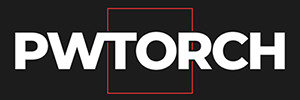
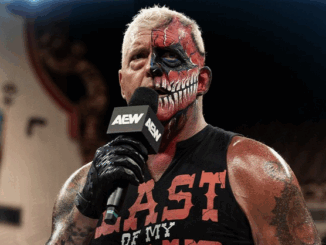
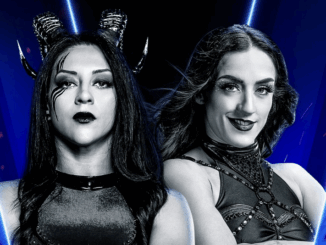
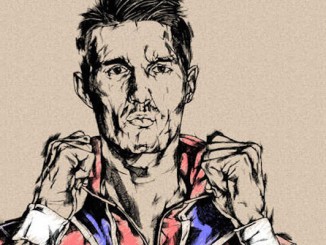
Leave a Reply
You must be logged in to post a comment.